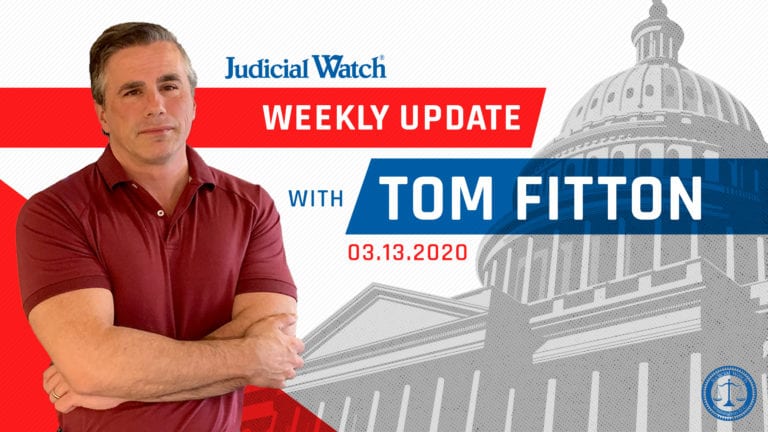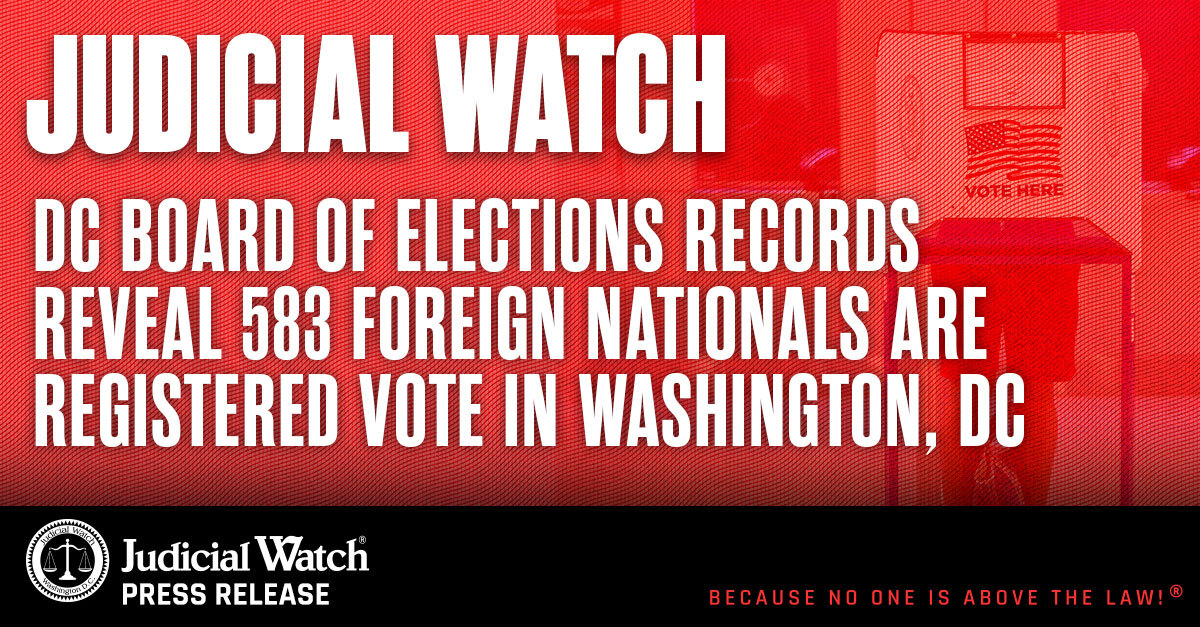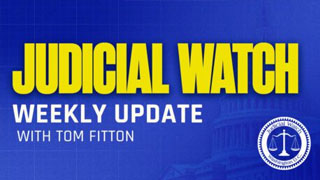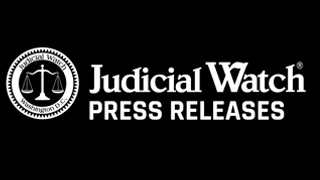

More Clinton Court Battles


Hillary Clinton Appeals Federal Court Order to Go Under Oath
Where are Hillary Clinton’s Text Messages?
FBI Cleared Extremists Who Carried Out Deadliest U.S. Attacks Since 9/11
U.S. Makes $175 Billion in Payments “That Should Not Have Been Made”
Hillary Clinton Appeals Federal Court Order to Go Under Oath
In another desperate attempt by the Clinton machine to delay truth and accountability for her email conduct and how it impacted the people’s “right to know” under FOIA, lawyers for former Secretary of State Hillary Clinton and her former Chief of Staff Cheryl Mills have asked the Court of Appeals to overturn a U.S. District court order granting Judicial Watch’s request for their depositions about Clinton’s emails and Benghazi attack records. Lawyers for Clinton and Mills filed a “Petition for Writ of Mandamus” earlier today.
The Clinton request comes in Judicial Watch’s lawsuit that seeks records concerning “talking points or updates on the Benghazi attack” (Judicial Watch v. U.S. Department of State (No. 1:14-cv-01242)). Judicial Watch famously uncovered in 2014 that the “talking points” that provided the basis for Susan Rice’s false statements were created by the Obama White House. This Freedom of Information Act (FOIA) lawsuit led directly to the disclosure of the Clinton email system in 2015.
On March 3, 2020, Judge Lamberth granted Judicial Watch’s request to depose Clinton about her emails and Benghazi attack documents. The court also ordered the deposition of Mills and two other State Department officials. Additionally, the court granted Judicial Watch’s request to subpoena Google for relevant documents and records associated with Clinton’s emails during her tenure at the State Department.
In December 2018, Judge Lamberth first ordered discovery into whether Secretary Clinton’s use of a private email server was intended to stymie FOIA; whether the State Department’s intent to settle this case in late 2014 and early 2015 amounted to bad faith; and whether the State Department has adequately searched for records responsive to Judicial Watch’s request. The court also authorized discovery into whether the Benghazi controversy motivated the cover-up of Clinton’s email. The court ruled that the Clinton email system was “one of the gravest modern offenses to government transparency.” The State and Justice Departments continued to defend Clinton’s and the agency’s email conduct.
Judge Lamberth overruled Clinton’s and the State and Justice Department’s objections to limited additional discovery by first noting:
Discovery up until this point has brought to light a noteworthy amount of relevant information, but Judicial Watch requests an additional round of discovery, and understandably so. With each passing round of discovery, the Court is left with more questions than answers.
Additionally, Judge Lamberth said that he is troubled by the fact that both the State Department and Department of Justice want to close discovery in this case:
[T]here is still more to learn. Even though many important questions remain unanswered, the Justice Department inexplicably still takes the position that the court should close discovery and rule on dispositive motions. The Court is especially troubled by this. To argue that the Court now has enough information to determine whether State conducted an adequate search is preposterous, especially when considering State’s deficient representations regarding the existence of additional Clinton emails. Instead, the Court will authorize a new round of discovery …
With respect to Clinton, the court found that her prior testimony, mostly through written sworn answers, was not sufficient:
The Court has considered the numerous times in which Secretary Clinton said she could not recall or remember certain details in her prior interrogatory answers. In a deposition, it is more likely that plaintiff’s counsel could use documents and other testimony to attempt to refresh her recollection. And so, to avoid the unsatisfying and inefficient outcome of multiple rounds of fruitless interrogatories and move this almost six-year-old case closer to its conclusion, Judicial Watch will be permitted to clarify and further explore Secretary Clinton’s answers in person and immediately after she gives them. The Court agrees with Judicial Watch – it is time to hear directly from Secretary Clinton.
Judicial Watch will continue the fight to hold Clinton accountable and to bring out the truth for all to see.
Where are Hillary Clinton’s Text Messages?
In January we released emails that included an August 2011 one from Huma Abedin to Hillary Clinton stating: “Sent you a couple of text messages.” The email was among other emails that had only recently and magically been found by the FBI and produced to the State Department.
When we inquired, the State Department denied the text messages existed.
So we have filed a FOIA lawsuit for all text and other electronic messages of the former secretary of state and her former deputy chief of staff (Judicial Watch v. U.S. Department of State (No. 1:20-cv-00441)).
Last week, a federal court criticized the State and Justice Departments for providing no explanation about how these emails were found at this late date:
State failed to fully explain the new emails’ origins when the Court directly questioned where they came from.
We filed our recent FOIA lawsuit after State denied any responsive records exist in response to two January 2020 FOIA requests for:
All text messages, encrypted app messages and instant messages involving official government business sent or received by former Secretary of State Hillary Rodham Clinton from January 1, 2009 through February 1, 2013.
So where are Hillary Clinton’s text messages? We uncovered the hidden Clinton emails, and now we’ve discovered that Secretary Clinton and her top aide Huma Abedin where talking by text.
This comes on top of another major development: U.S. District Court Judge Royce C. Lamberth granted our request to depose Clinton about her emails and Benghazi attack documents. The court also ordered the deposition of Clinton’s former Chief of Staff Cheryl Mills and two other State Department officials.
Additionally, the court granted our request to subpoena Google for relevant documents and records associated with Clinton’s emails during her tenure at the State Department.
Clinton repeatedly stated that the 55,000 pages of documents she turned over to the State Department in December 2014 included all of her work-related emails. In response to a court order in another Judicial Watch case, she declared under penalty of perjury that she had “directed that all my emails on clintonemail.com in my custody that were or are potentially federal records be provided to the Department of State, and on information and belief, this has been done.”
As they say, the Internet is forever, and the efforts by Clinton and the Deep State to cover her tracks continue coming up short.
FBI Cleared Extremists Who Carried Out Deadliest U.S. Attacks Since 9/11”
The FBI Barack Obama molded in his image was quite adroit at scheming to take down his successor, but it failed miserably in protecting the American people from a threat the former President brushed off: Islamic terrorism. Our Corruption Chronicles blog details what the DOJ watchdog has found:
Nearly two decades after its well-documented transgressions culminated in the worst terrorist attack on U.S. soil, the federal law enforcement agency responsible for protecting the country against a repeat still struggles to do its job and it has cost dozens of American lives. The failures have allowed homegrown violent extremists (HVE) to carry out more than 20 attacks in the U.S. since 9/11, some of them after the agency, the FBI, closed counterterrorism investigations of the attackers.
The negligence has resulted in the death of 70 people murdered by at least six terrorists who had been under investigation by the FBI, according to a report issued recently by the Department of Justice (DOJ) Inspector General. In all the probes the FBI closed the cases quickly after ruling that the extremists presented no threat to national security. The agency examined its mishaps in the aftermath of the deadly events. “Following these attacks, the FBI conducted reviews and determined there were weaknesses in its HVE assessment processes,” the agency watchdog writes in its report. “However, we found that the FBI has not taken sufficient action to address these weaknesses.” There is more that may not have been included in the probe. The DOJ IG goes on to disclose that “in 2017, the FBI conducted an enterprise-wide review and identified potential terrorist threats that may not have been adequately assessed during calendar years (CY) 2014 through 2016, which amounted to 6 percent of the total assessments reviewed. We found that the FBI did not take adequate action on nearly 40 percent of these assessments for 18 months.”
The latest FBI transgressions resulted in some of the deadliest terrorist attacks since Islamic jihadists carried out their plots in 2001, killing thousands of innocent Americans. They include the 2009 massacre at the Fort Hood Army base in Texas, the 2013 Boston Marathon bombing, the 2016 mass shooting at an Orlando, Florida nightclub and the 2017 attack at the Fort Lauderdale Airport in south Florida. In 2011 the FBI opened a counterterrorism lead into Nidal Hasan, the perpetrator of the Fort Hood shooting, but the probe was closed five months later after agents evidently determined that Hasan did not pose a national security threat. Months later he massacred 13 people at a U.S. military post. The Orlando shooter, Omar Mateen, was also under FBI investigation before he carried out his attack for making statements that displayed his radicalized ideology. Less than a year later the probe was closed after agents ruled the information to be unfounded. Mateen killed 46 people.
Boston Marathon terrorist Tamerlan Tsarnaev was also on the FBI’s radar before his attack, but the agency decided that he and his terrorist brother, Dzhokhar Tsarvaev, did not pose a threat to national security, according to the IG report. Tamerlan Tsarnaev, the older brother who was eventually killed in a wild shootout with police, was under investigation by the FBI’s Joint Terrorism Task Force (JTTF) after Russian authorities notified the agency that he had become radicalized. The Obama administration could have deported Tamerlan Tsarnaev years before he detonated bombs at a major sporting event over a criminal arrest, according to information uncovered by Judicial Watch shortly after the bombings that killed three and injured hundreds. The government also dropped the ball on Esteban Santiago, who killed five people in a 2017 attack at the Fort Lauderdale Airport. Weeks before the rampage, the FBI closed Santiago’s probe ruling that he did not pose a threat to national security.
It seems that little has changed since 9/11. After the attacks, the FBI got blasted for missing many opportunities to stop the hijackers and failing to uncover important intelligence about them. In fact, a DOJ IG report disclosed that the FBI missed at least five opportunities before the 2001 terrorist attacks to uncover crucial intelligence about the perpetrators. The watchdog specifically blamed the FBI for not knowing that two of the 9/11 hijackers lived in the U.S. and for failing to follow up on an agent’s theory that Osama bin Laden was sending students to American flight schools. A decade and a half later, a panel created by Congress to determine if the FBI had adopted post-9/11 recommendations found that the problems persisted. In a 2015 report the 9/11 Review Commission was critical of the FBI’s Joint Terrorism Task Force’s ability to detect terror plotters before they strike and found the agency’s computer hacking investigations were lacking.
It may be time to completely rethink this agency.
U.S. Makes $175 Billion in Payments “That Should Not Have Been Made”
I suppose we should be grateful that, although it wastes our money like nobody’s business, our federal government at least has the decency to try to count how much it wastes. Let our Corruption Chronicles blog bring you up to date.
Though federal law forbids it, every year the U.S. government squanders huge sums of American taxpayer dollars and dismisses it matter-of-factly as a “monetary loss.” In 2019, Uncle Sam misspent an eye-popping $175 billion, a 15% increase from the previous year and the figure is likely to grow in the future. The largest chunk—$121 billion or 69%—was blown on “improper payments” in three federal programs, according a federal audit issued this month by the nonpartisan investigative arm of the U.S. Congress, the Government Accountability Office (GAO). The programs with the highest concentration of waste last year were Medicaid, Medicare and Earned Income Tax Credit.
“Improper payments—payments that should not have been made or that were made in incorrect amounts—continue to be an area of fiscal concern in the federal government,” the GAO report states. “Improper payments have been estimated to total almost $1.7 trillion government-wide from fiscal years 2003 through 2019.” The problem is so pervasive that Congress passed a law called Improper Payments Elimination and Recovery Act (IPERA) in 2010 to address the issue. Incredibly, many federal agencies don’t bother complying with the measure and the waste continues full throttle. In 2018 the government made $151 billion in improper payments, according to figures included in the GAO report. The government simply adds the numbers and reports it as “monetary loss, an amount that should not have been paid and in theory should or could be recovered,” according to congressional investigators.
There is no end in sight to the problem because around half of the federal agencies involved are noncompliant with IPERA, which requires agency heads to review and identify programs and activities that may be susceptible to significant improper payments. The law also demands that they publish and meet annual targets for improper payment reduction and accurately report in a timely manner all improper payments. Instead, Congressional investigators found that individual agency watchdogs discovered 21 programs were noncompliant with IPERA for each of the past three years, representing billions in improper payments. “The government’s ability to understand the full scope of its improper payments is hindered by incomplete, unreliable, or understated estimates; risk assessments that may not accurately assess the risk of improper payment; and noncompliance with criteria listed in IPERA,” the GAO writes.
Let’s examine the incredible figures considered by investigators last fiscal year. Remember, these are agencies that are reporting waste but not all are complying, so we really have no idea how much of our money the government is recklessly blowing. Medicaid, which provides around 65.7 million poor people nationwide with free medical care, doled out a whopping $57.4 billion in improper payments last year. Medicare, the government health insurance program for retired people made $46.2 billion in improper payments, the GAO found. The Earned Income Tax Credit, an Internal Revenue Service (IRS) benefit for low-income workers distributed $17.4 billion in erroneous payments last year. The Earned Income Tax Credit has long been plagued by fraud and corruption that has resulted in the loss of tens of billions of dollars. The program is rife with improper applications and fraudulent claims, according to one report that cites IRS figures showing more than 60% of overpayments are due to “manipulation of self-employed income and expenses, unqualified dependents being claimed, and misuse of single and head of household filing status.”
The GAO writes that most of the government’s improper payment estimates are related to three root causes that, frankly, most Americans may find difficult to believe. The first is insufficient documentation to determine payment accuracy. About $74.1 billion in improper payments resulted from situations where the agency lacked supporting documentation necessary to verify the accuracy of the payments. The second is administrative or process error. About $39.1 billion resulted from incorrect data entry, classifying, or processing of applications or payments. The third is the inability to authenticate eligibility. About $38 billion resulted from the agency not being able to authenticate eligibility criteria, the GAO found.
Until next week …














